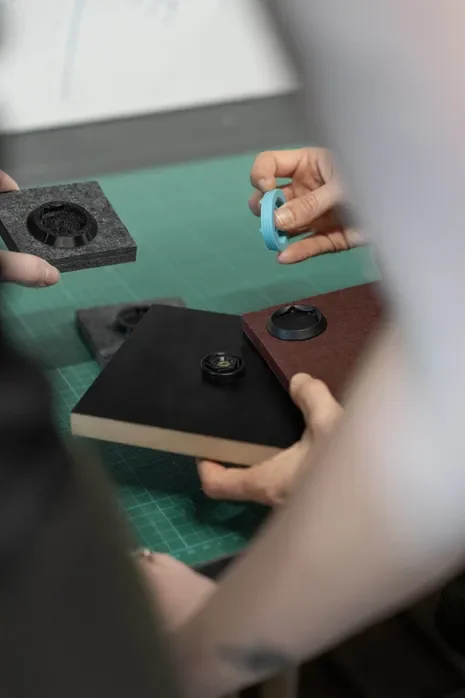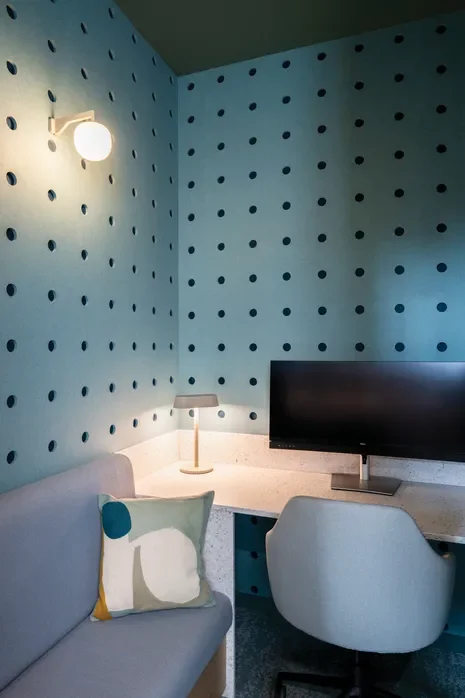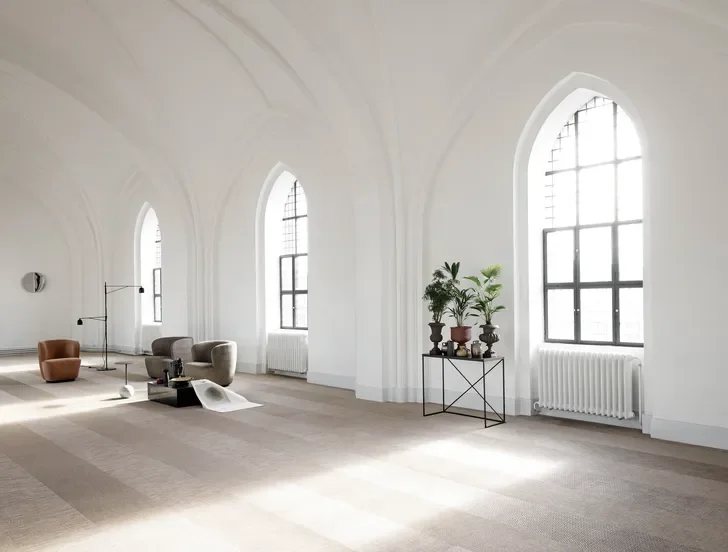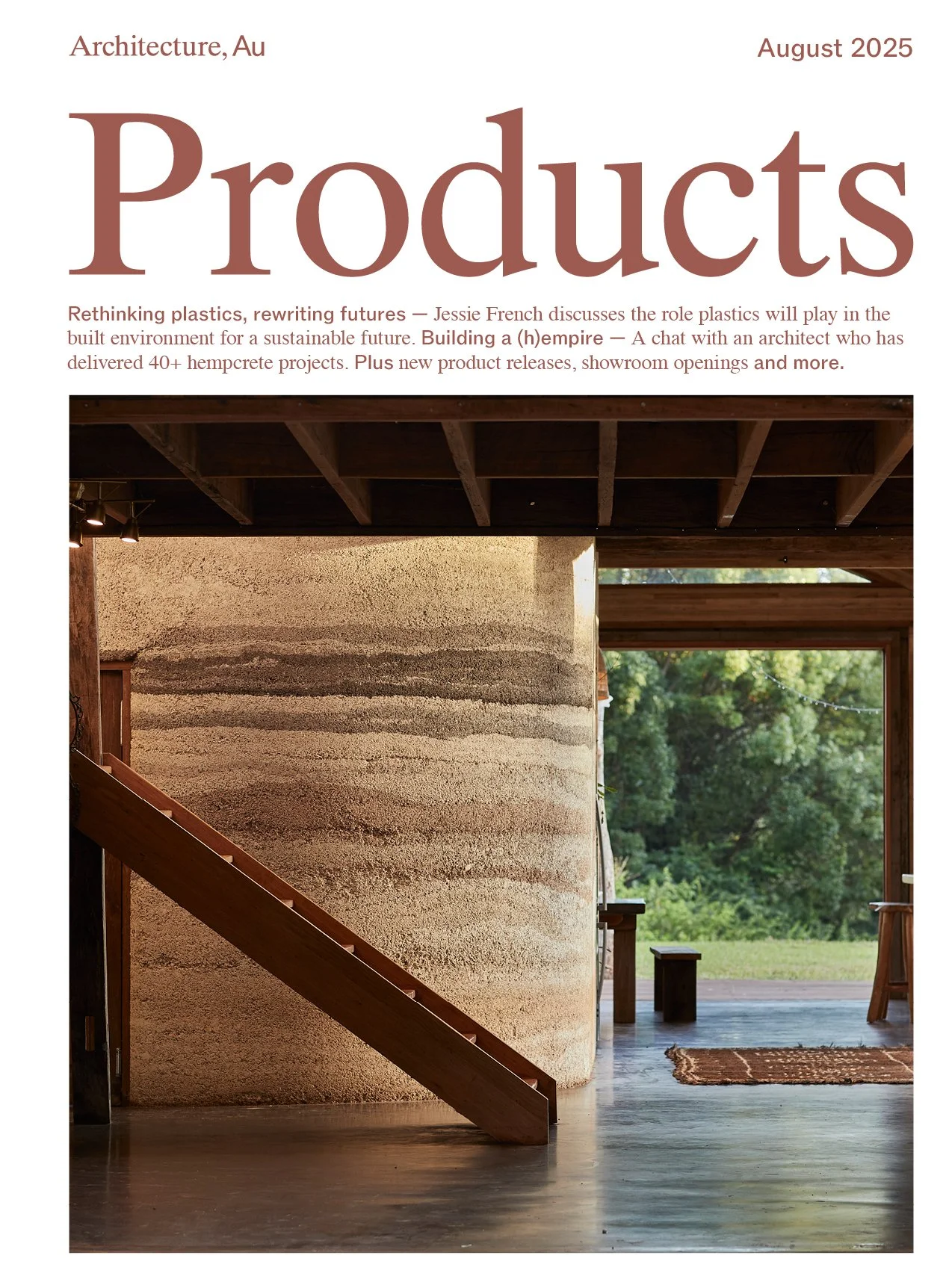A solution to a sticky problem
Originally published in ArchitectureAu Products August 2025 issue. Words by Olivia Round.
Material choices are no longer just about performance or aesthetics – they have now been recognised as a critical factor in human health and wellbeing. In interior environments, adhesives are a particular area of concern. Bonding agents often contain volatile organic compounds (VOCs) – a sinister force in our living spaces due to their invisible and undetectable release of harmful toxins into the atmosphere.
An expert on the topic, Dr Fiona Gray has dedicated her practice, Bioliving by Design, to bridging science and architecture to create healthier homes through biophilic design and building biology principles.
I spoke with Dr Gray to learn more about the health and environmental impacts of adhesives, her approach to material selection, and the guidance she offers fellow practitioners through her consulting work.
Olivia Round: Why should architects be considering adhesive alternatives?
Fiona Gray: From my perspective there are strong reasons to lean toward mechanical fixings but adhesives still have their place. It’s about making intentional choices that balance performance, aesthetics, health, and sustainability – choosing the right tool for the right job.
Environmentally, mechanical fixings are a great choice because they make things easier to take apart, repair, or reuse later on. They usually also have a smaller carbon footprint because chemical adhesives can complicate recycling or add extra embodied carbon due to the synthetic resins involved.
I also really like how exposed fixings add to the architectural expression by highlighting the material honesty and craftsmanship of the work.
Mechanically fixed assemblies also tend to last longer because they’re less vulnerable to UV, heat, or moisture damage.
That said, adhesives definitely have their advantages. For example, in lightweight or composite systems like laminated timber or SIPs, adhesives help distribute loads and stresses
more evenly. And when it comes to maintaining the integrity of air, vapour, or moisture barriers, adhesives seal things up in ways that mechanical fixings alone just can’t achieve.
OR: What are the potential risks to human health?
FG: For building occupants, one of the biggest concerns I see is exposure to volatile organic compounds, or VOCs. These are chemicals that off gas from many adhesives, not just while they’re curing, but often at lower levels for months, or sometimes even years. VOCs are linked to headaches, dizziness, and eye or throat irritation, and they can make asthma or other respiratory issues worse, which is obviously a real concern.
There’s also the often- overlooked risks from semi- volatile organic compounds,
or SVOCs. Unlike VOCs, which mainly affect air quality, SVOCs migrate more slowly
out of materials and settle into household dust, on surfaces, and in soft furnishings, which creates persistent, long-term exposure. Ongoing exposure to SVOCs has been linked to endocrine disruption and reproductive or developmental harm, and they can build up in the body over time so the impacts can be potentially serious.
On the construction side, workers face direct risks as well. For example, polyurethane-based adhesives can cause occupational asthma or trigger severe allergic reactions with repeated handling. And if people aren’t using the right protective gear, skin contact can lead to dermatitis or even chemical burns.
There’s also a fire safety angle. Under high heat or combustion, some adhesives can release highly toxic gases, posing serious risks for both occupants and first responders.
So overall, it’s a layered set of risks that needs really careful consideration.
OR: What are the environmental impacts?
FG: For me, one of the biggest environmental concerns with adhesives is their reliance on petrochemical materials, which gives them a significant embodied carbon footprint due to the extraction, processing and manufacturing of the synthetic resins, solvents, and additives that go into them.
Then there’s the end-of-life issue. Adhesive-bonded components are notoriously tricky because once materials are glued together, they’re very difficult, and sometimes impossible, to separate into recycling streams. This increases the likelihood that these materials will end up in landfill or get incinerated. In landfills, adhesives can leach hazardous chemicals into the surrounding soil and water, contaminating local ecosystems. And when they’re incinerated, they can release toxic byproducts that contribute to air pollution and pose health risks to nearby communities.
I also worry about environmental persistence. Some adhesives break down incredibly slowly, adding to the burden of plastic and chemical pollution for decades.
So adhesives really need to be weighed carefully, not just in terms of how they perform in the short term, but also what kind of legacy they leave behind.
OR: In your consulting experience, what are the easy wins – and what are the more complex challenges – when trying to avoid adhesives and specify healthier products?
FG: There are definitely some easy wins when it comes to reducing adhesive use and shifting toward healthier materials. One of the simplest is designing material connections to rely on mechanical fixings instead of adhesives.
When adhesives are needed, one of the best things you can do is specify low-VOC and low-SVOC options with reliable third-party certifications. This is a practical, effective step that can make a meaningful difference to occupant health.
Another win can come from demanding more transparency from suppliers. I always ask for safety data sheets and make a point of looking for products with trusted certifications. This not only helps me make more informed decisions, but when enough of us do this, it puts pressure on manufacturers to step up and offer healthier, lower- emission products because they know the industry is paying attention and asking for it.
That said, it’s not always straightforward. Getting access to accurate, transparent data
can sometimes be difficult. Manufacturers don’t always provide full ingredient disclosure which makes it hard to compare options or confidently assess the trade-offs.
There’s also the challenge of industry habits and entrenched practices. Moving away from conventional, familiar products sometimes requires more specialised knowledge and often means pushing back against ingrained practices. Change can be slow and it often takes persistence and a willingness to challenge the mindset of ‘this is how we’ve always done it.’
OR: Can you share some examples of building products or finishes, ranging from low- risk to high-risk in terms of toxicity or health impacts?
FG: It can be tricky to rank products or finishes across the board because the risks often depend on the specific formulation, use, and project context. That said, there are certain chemical categories that tend to raise more red flags and deserve extra scrutiny.
Products containing formaldehyde-based adhesives, isocyanates, phthalates, or high-VOC content should be carefully evaluated as they can pose higher toxicity or health risks, especially if they’re not handled or specified properly.
I recommend looking to resources like the Living Building Challenge Red List which identifies the ‘worst in class’ substances widely used in the building industry. The Declare label is another helpful tool which acts like a ‘nutrition label’ for products, reporting ingredients and using a simple colour-coded system to flag chemicals of concern. Using tools like these makes it much easier to navigate the complexity of what’s in the materials we’re specifying.
OR: What are some of the most promising healthier alternatives to adhesives, and what trade-offs might architects need to consider?
FG: I’m excited about the rise of bio-based adhesives made from renewable materials like soy, lignin, or plant-based starches. They hold a lot of promise for reducing our reliance on petrochemicals and cutting embodied carbon. Of course, since these products are still emerging in the market there may be some trade-offs around availability, cost, durability,
or how well they work with current construction systems. In the end though, it really comes down to whether they meet the technical and performance needs of a given project and that’s something specifiers have to carefully assess for each specific situation.
OR: Do you believe architects and specifiers are giving enough consideration to the health benefits of avoiding adhesives in their projects?
FG: I’m encouraged by the growing momentum in the industry. Frameworks like WELL, the Living Building Challenge, and Green Star are doing a lot to push material health and chemical safety up the agenda. As access to clearer product data improves and healthier alternatives continue to enter the market, I believe architects and specifiers will be in a much stronger position to integrate these considerations more fully into their design and specification work. I’ve also been receiving more and more enquiries from architectural teams looking for support in making better material choices, which I see as another promising sign that interest in healthier, lower-toxicity solutions is really gaining traction across the industry.
Autex’s new SpinFix adhesive-free mount made from recycled PET. Image: Autex
Area Head Office in London featuring Acoufelt’s Pixel acoustic product which has a VOC rating of less than 0.5mg/m3 and is installed with Z-clip wall mounts.
Image: Acoufelt
Bolon floor tiles installed using the Floorlife No-Glue product. The range offers Tab-It, ultra-thin, double sided dry-tack tabs, and MagTabs, which combines dry-tack with magnetism.
Image: The Andrews Group





